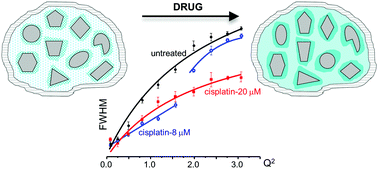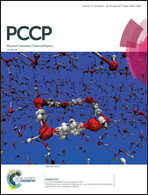Intracellular water – an overlooked drug target? Cisplatin impact in cancer cells probed by neutrons†
Abstract
The first neutron scattering study on human nucleated cells is reported, addressing the subject of solvent-slaving to a drug by probing intracellular water upon drug exposure. Inelastic and quasi-elastic neutron scattering spectroscopy with isotope labelling was applied for monitoring interfacial water response to the anticancer drug cisplatin, in the low prognosis human metastatic breast cancer cells MDA-MB-231. Optical vibrational data were also obtained for lyophilised cells. Concentration-dependent dynamical changes evidencing a progressive mobility reduction were unveiled between untreated and cisplatin-exposed samples, concurrent with variations in the native organisation of water molecules within the intracellular medium as a consequence of drug action. The results thus obtained yielded a clear picture of the intracellular water response to cisplatin and constitute the first reported experimental proof of a drug impact on the cytomatrix by neutron techniques. This is an innovative way of tackling a drug's pharmacodynamics, searching for alternative targets of drug action.



 Please wait while we load your content...
Please wait while we load your content...